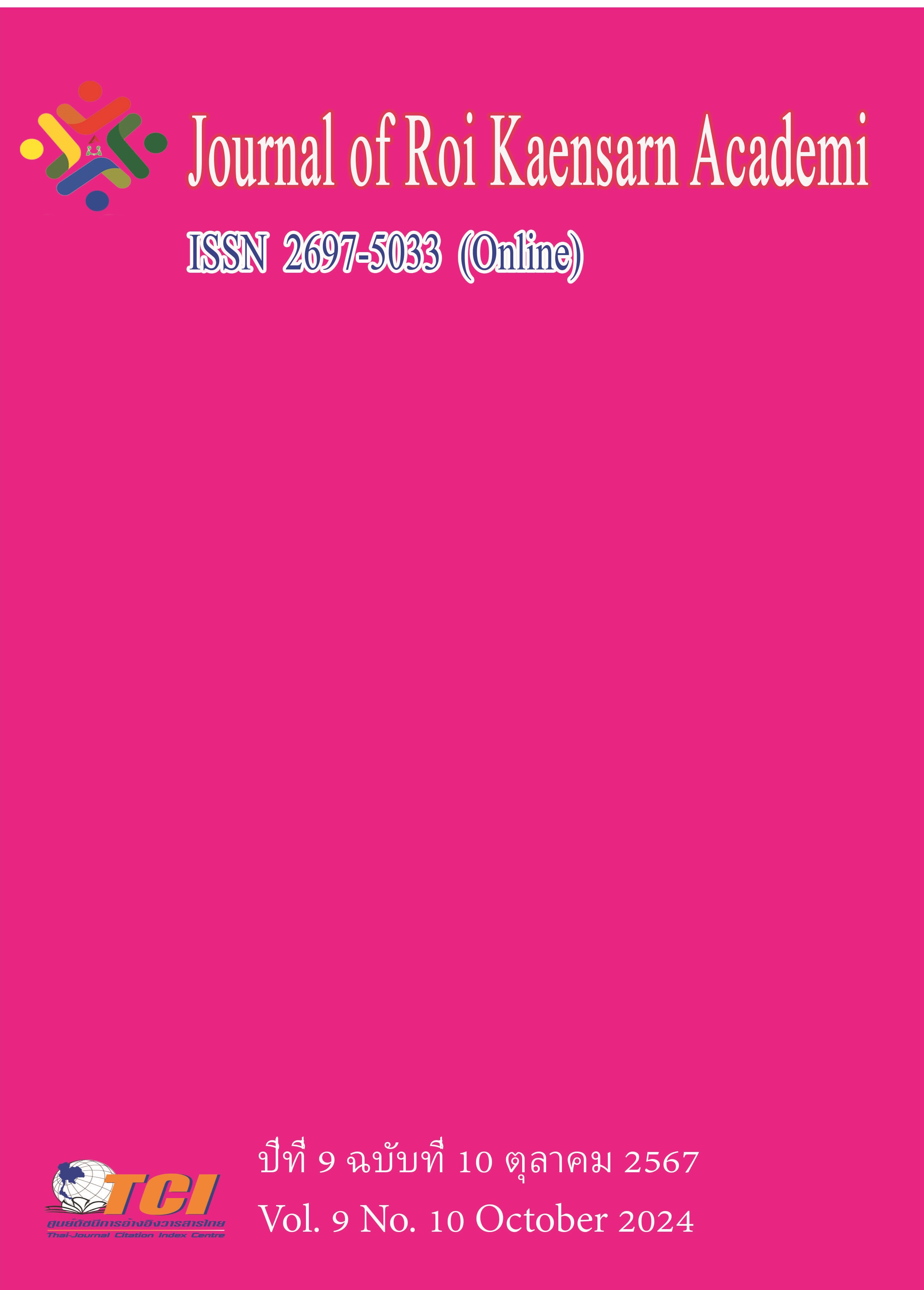The Jade Carving Wisdom and Identity of Zhang Jiawei's Huai School
Main Article Content
บทคัดย่อ
Huai Huai School jade carving, a significant part of Chinese traditional art, had a long history deeply rooted in the cultural heritage of the Xuzhou region. This art form was renowned for its exquisite craftsmanship and profound cultural connotations. However, with modernization and market changes, the inheritance and development of Huai School jade carving faced new challenges.
This study aimed to: 1) explore the historical background of Huai School jade carving; 2) examine the current state of its identity and development; and 3) propose strategies for improving its inheritance and growth. The research employed qualitative methods, including interviews, observations, and literature analysis. The sample consisted of five key informants, eight practitioners, and 18 general participants. Research tools such as structured interviews, work analysis, and field observation logs were used to gather data on the creative process and market trends.
Data collection was based on written documents and field observations, followed by thematic and comparative analysis. Key themes and patterns were identified to offer a detailed descriptive analysis.
Findings indicated that: 1) Huai School jade carving was historically significant, reflecting the evolution of Chinese jade art across different periods; 2) the current state of the Huai School faced challenges such as a shortage of successors, limited innovation, and market decline, which hindered its growth; and 3) integrating traditional craftsmanship with modern aesthetics and technology was essential for revitalizing the industry. Zhang Jiawei’s efforts in education, skill transmission, and brand-building made significant contributions to promoting Huai School jade carving locally and internationally.
Article Details
References
Cao, T., & Wang, J. (2022). Craft reorganization: Research on the development of contemporary jade carving creation in Xiuyan. Proceedings of the 19th Shenyang Science Academic Annual Conference, 485-490.
Chen, R. (2021). Analysis of the inheritance and innovation of Shanzi carving techniques. Tiangong, 05, 108-109.
Cheng, X. (2017). Research on the generation of Yangtze River jade carving techniques from the perspective of intangible cultural heritage protection. Research Article. College: Sichuan Academy of Fine Arts.
Guan, F., & Wang, N. (2021). Research on the inheritance and teaching of intangible cultural heritage skills in universities - Taking Guangzhou jade carving as an example. Chinese Handicraft, 04, 12-13.
Li, W. (2021). Brief introduction to jade carving creation and its contemporary development. Culture Monthly, 02, 204-205.
Liu, C. (2019). Research on the inheritance of intangible cultural heritage of handicrafts in Jiangsu Province. Research Article. College: Nanjing Agricultural University.
Pei, H. (2017). Research on the development status and inheritance of Suzhou jade carving from the perspective of intangible cultural heritage. Research Article. College: Anhui University.
Shi, J., Tang, G., Yuan, X., & Liang, T. (2023). Research on the inheritance and development of Bengbu jade processing techniques. Chinese Baoyu Stone, 04, 57-61.
Tan, M. (2020). Research on the practice of jade carving creation based on Yunnan traditional metal crafts. Research Article. College: Yunnan Academy of Arts.
Wang, H. (2022). Research on modern apprenticeship practice based on the inheritance of intangible cultural heritage jade carving techniques. Journal of Beijing Vocational College of Economics and Management, 02, 44-51.
Yang, H. (2022). The cultural connotation and inheritance of traditional folk jade carving craft. Tiangong, 35, 76-78.
Zhang, Z. (2019). Research on the development path of traditional craft innovation based on digital media technology - Taking Yangzhou jade carving technique as an example. Artist, 09, 16-18.
Zheng, Q. (2016). Research on the development of Xiuyan jade carving cultural industry. Research Article. College: Dalian University of Technology.
